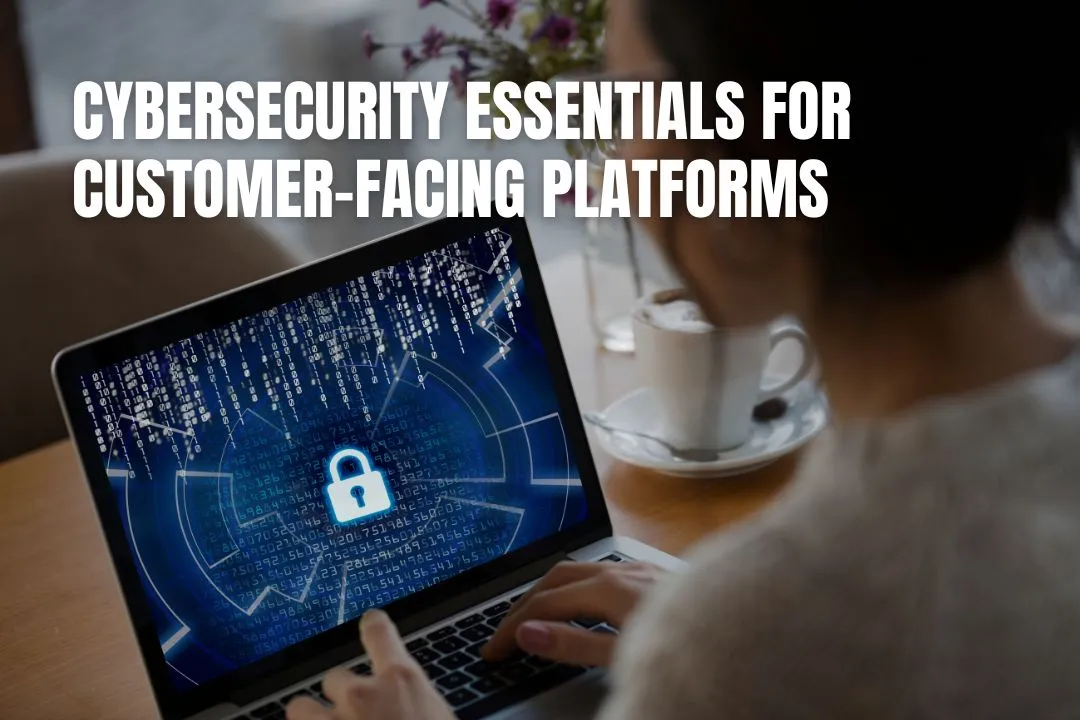
Digital platforms have become the face of modern business. From e-commerce portals to mobile banking apps, customer-facing systems manage enormous amounts of personal and financial data every day. With convenience comes vulnerability, and protecting these digital entry points is no longer an option. It is a requirement for trust, compliance, and long-term success.

Cyberattacks on customer platforms have grown more frequent and sophisticated. Attackers target login credentials, payment information, and personal identifiers through phishing, malware, and data injection techniques. Even small vulnerabilities, such as unpatched plugins or outdated APIs, can provide access to entire systems.
A single breach can cause more than financial loss. It erodes customer confidence, damages brand reputation, and triggers legal consequences under data protection laws. Businesses must therefore treat cybersecurity as a core operational priority rather than a technical afterthought.
User authentication remains one of the most effective defences. Multi-factor authentication (MFA) adds a critical layer of protection beyond passwords by requiring secondary verification, such as a mobile code or biometric scan. Session timeouts and automatic logouts for inactive users help prevent unauthorised access on shared devices.
Password policies must also evolve. Encouraging long, complex passphrases is more effective than requiring frequent password changes. Businesses should also consider single sign-on (SSO) systems to centralise access management and simplify security for users.
Every customer-facing platform stores or transmits sensitive data, making encryption non-negotiable. End-to-end encryption ensures that even if data is intercepted, it remains unreadable without the proper keys. Transport Layer Security (TLS) should be enforced for all communications, while at-rest encryption protects stored customer records.
Data segmentation further strengthens defences by isolating sensitive information from other parts of the system. This prevents attackers from accessing everything in a single breach. Regular audits and penetration testing can reveal hidden vulnerabilities before malicious actors exploit them.
Security begins during development. Implementing secure coding practices helps prevent common flaws such as SQL injection or cross-site scripting. Developers should perform code reviews and rely on automated vulnerability scanning tools before deployment.
On the network side, firewalls and intrusion detection systems serve as early warning mechanisms. Web application firewalls (WAFs) can identify and block suspicious traffic before it reaches the application layer. Continuous monitoring is essential.
Technology alone cannot guarantee security. Human error remains one of the leading causes of data breaches. Training employees to recognise phishing attempts, social engineering tactics, and improper data handling practices reduces risk significantly. Customers, too, benefit from guidance. Reminders to use strong passwords, verify URLs, and log out of shared devices can prevent costly mistakes.
Companies offering digital onboarding for banks and other high-security sectors are demonstrating how strong authentication, encrypted communication, and user education work together to create safer digital experiences. The same principles apply across all industries.
Customers expect digital convenience, but they also expect privacy and safety. Businesses that consistently invest in cybersecurity are building loyalty as much as protection. To learn more, look over the infographic below.

Multi-factor authentication adds a second layer of security to the login process. Instead of just a password, you must provide another piece of evidence, like a code from your phone or a fingerprint scan. This is crucial because even if a criminal steals your password, they still can't access your account without the second factor.
You can protect your platform by integrating security into the development process. This involves using secure coding practices to prevent flaws like SQL injection and cross-site scripting. Performing regular code reviews and using automated scanning tools before deployment helps catch potential issues early.
Current best practice suggests that encouraging users to create long, complex passphrases is more effective than forcing frequent password changes. A passphrase is a longer, more memorable sequence that is harder for attackers to guess or crack through brute force.
Encryption is essential for making data unreadable to unauthorised parties. You should use Transport Layer Security (TLS) to encrypt data as it travels between the user and your platform, and at-rest encryption to protect data stored on your servers. This ensures information remains secure even if it's intercepted or stolen.
Human error is a significant cause of security breaches. By educating your customers, you empower them to protect their own accounts. Simple guidance, such as reminders to use strong passwords, avoid suspicious links, and log out from shared devices, can prevent many common security incidents and build trust in your platform.